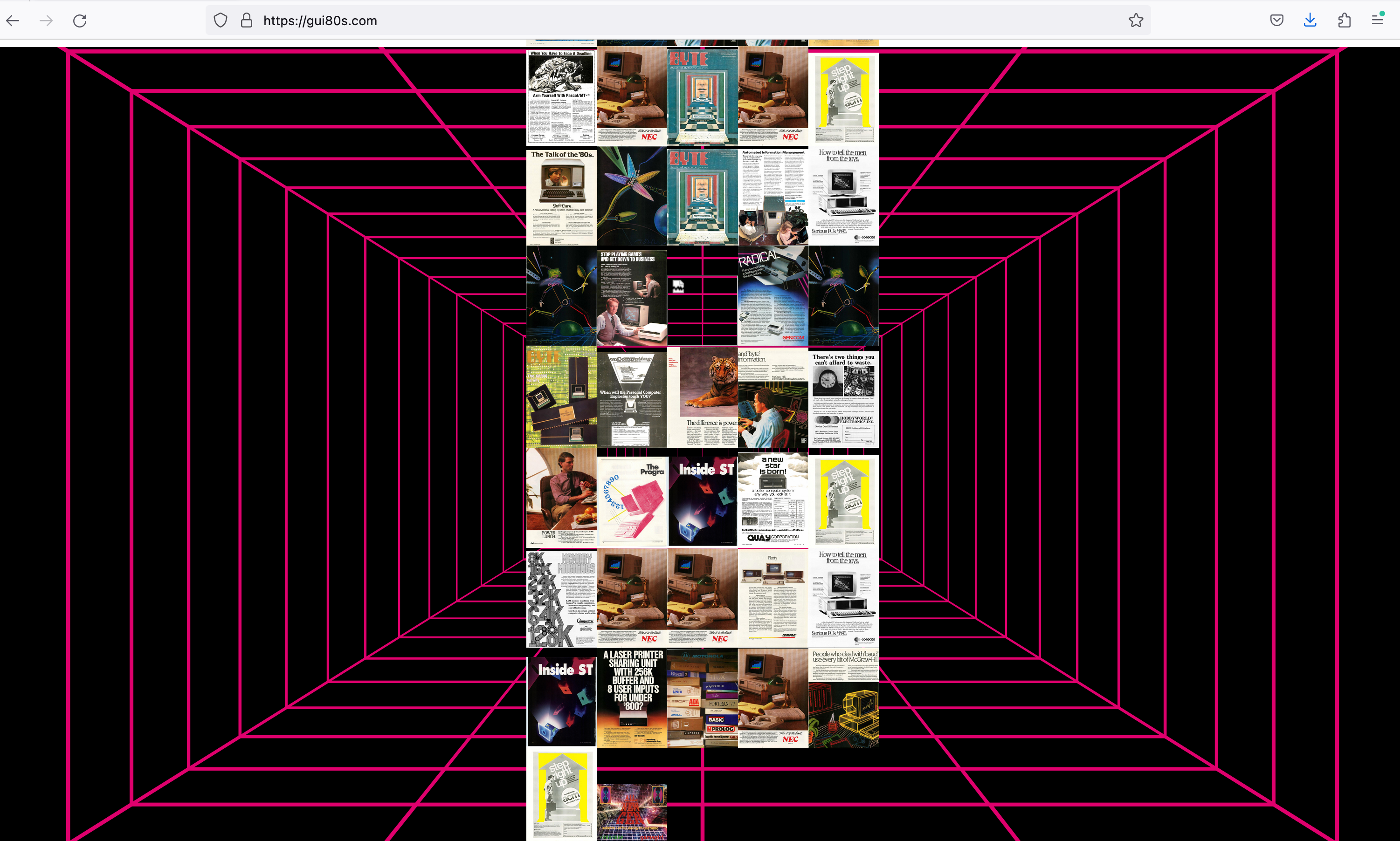The Graphical User Intarface of the '80s
The Graphical User Intarface of the '80s explores the computer magazines of the '80s as key years for building the user and market imaginary around personal computers by placing visuals from the magazine in a format of an Instagram-like endless scroll.
This reading onto a magazine from the perspective of a GUI observes the medium of the magazine as an interface to technology as a whole, especially in the pre-cyberspace era. This process is enacted in several planes. On one level, the magazine provides a medium for translating the language of computers into more human readable expressions. The translation itself requires the act to be done on multiple layers, because computers themselves assemble meaning from plural processes that become executed. Wendy Chun discusses this translation process in The Enduring Ephemeral, or The Future is a Memory, offering a reflection on source code being far from source and assembly language. When thinking about computers, it is particularly interesting to see how the function of the magazines of the ‘80s was highly instructional, as they consisted of literal manuals for assembling electronic parts into whole computers, as well as acquiring programming literacy.
The birth of the GUI slowly introduced a segmentation among computer users to those with more engineering, programming affinity, and those who were more interested in functionalities being as intuitive and effortless as possible. The GUI slowly came to define the general, everyday user, while the tinkerer started to become profiled as the geek, the hacker. The magazine served as an interface for interaction prior to networking as well, through sections with letters from readers and a space to visualize and imagine both technology and other users, when computers were only starting to become accessible. Computer magazines as cornerstones of lifestyle narratives were key in this process, as they wanted to communicate with both of these groups. They did this in providing an imagery of the users themselves, projecting back the usage of computers into a self fulfilling prophecy. Who was the computer for, and more importantly, who was it going to be for? In other words, the medium of the magazine helped bring into being what it imagined. Though, through predicting, it created the future by circumscribing other options that were not offered.
